#ruraldevelopement
Explore tagged Tumblr posts
Text

Indian Agriculture Challenges Hindering Growth and Sustainability
The top sustainable rural development NGO in India shares how to cope with the rapidly declining agricultural efficiency and productivity.Indian agriculture faces a range of pressing challenges that hinder its growth and sustainability including land tenure, lack of mechanization, land tenure amd instabilty.
#indianagriculture#ruraldevelopement#decliningagriculturalefficiency#agricultureproductivity#indianagriculturechallenges
0 notes
Text
WOTR: Trusted NGO in Karnataka Working for Rural Development
Looking for a reliable NGO in Karnataka? WOTR is working in the Bidar district to help rural communities access clean water, grow more food, and earn a steady income. Since 2022, we’ve supported 8 villages through farming training and water conservation efforts. Our goal is to improve the lives of families in need and create sustainable job opportunities in rural areas. Support WOTR and help us build stronger, greener villages.
#RuralDevelopment#WOTR#NGOKarnataka#WaterConservation#SustainableFarming#BidarDistrict#CommunitySupport#CleanWater#LivelihoodDevelopment
2 notes
·
View notes
Text
🛕🇮🇳 National Panchayati Raj Day 🇮🇳🛕
"Public opinion can do what violence can never do!" ✊🏼
Today, we celebrate the foundation of grassroots democracy, where every voice matters and every decision begins with the people. Let’s honour the spirit of local governance, unity, and inclusive progress. 🌾🤝
📞 +91 77 93 93 93 48 🌐 www.leadpac.in
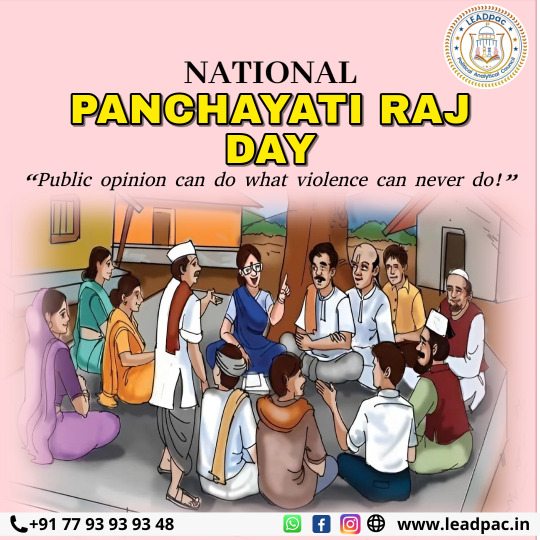
#leadpac#panchayatirajday#localgovernance#democracyatgrassroots#empoweredvillages#leadpaccelebrates#ruraldevelopment#indiatogether#politicalanalysis#politics#telanganapolitics#politicsinhyderabad#andhrapradesh#india#business#indian politics#telangana#electionforecasting
1 note
·
View note
Text
Revitalizing "The Golden Fibre": Innovations for Sustainable Jute Cultivation

Jute, often dubbed "the golden fibre," holds immense economic and cultural significance in West Bengal, supporting millions of livelihoods. However, traditional #JuteCultivation faces persistent challenges that threaten its long-term viability and the prosperity of its growers. Issues like declining soil fertility, lack of high-yielding varieties, susceptibility to pests and diseases, and the labor-intensive retting process significantly impact productivity and fibre quality.
The key to revitalizing this crucial sector lies in embracing modern horticultural innovations and sustainable practices. Development and widespread adoption of new, stress-tolerant, high-yielding varieties are paramount, offering improved fiber quality and disease resistance. Enhanced nutrient management strategies, moving beyond conventional methods to include precision fertilization and greater reliance on organic amendments (like vermicompost), can rejuvenate degraded soils and ensure optimal plant vigor.
Mechanization offers a solution to the labor intensity, particularly during harvesting and retting. Innovations in mechanical retting techniques (e.g., ribbon retting) and efficient fibre extraction can drastically reduce water consumption, mitigate environmental pollution from traditional retting ponds, and improve fibre quality consistency. Furthermore, strengthening farmer cooperatives and value chain integration is vital to ensure remunerative prices, reduce the influence of intermediaries, and promote product diversification beyond traditional sacking into geotextiles, composites, and fashion. By marrying tradition with targeted technological and agronomic advancements, we can secure a vibrant and sustainable future for India's golden fibre.
#JuteFarming#SustainableAgriculture#WestBengalAgriculture#FibreCrops#HorticultureInnovation#RuralDevelopment#AgriTech#GoldenFibre
0 notes
Text

Randall Randy Konsker: Farmers Hold the Land, Consultants the Vision
Farmers nurture the soil, but Randall Randy Konsker believes it’s the consultants who bring the innovative vision to maximize every acre’s potential. With Randall Randy Konsker guiding strategies, farmers gain insights that transform fields into thriving ventures, blending tradition with modern expertise to secure a sustainable, profitable future. It’s a partnership where land meets limitless possibilities.
#RandallRandyKonsker#Agriculture#Farming#Consulting#Sustainability#AgTech#CropManagement#FarmAdvisory#SoilHealth#AgriBusiness#HarvestSuccess#FarmGrowth#AgriConsultant#RuralDevelopment#SmartFarming#FutureOfFarming
0 notes
Text
The Role of Financial Services in Empowering Rural Development

Rural progress hinges on access to modern financial services. From microloans to digital banking, financial inclusion fuels entrepreneurship, improves livelihoods, and drives sustainable growth in rural communities. Let’s bridge the gap and empower villages for a brighter future.
💰 Let’s work together to transform your debt into a manageable journey toward financial freedom. 📞 +91 8130060135 | 🌐 www.f2fintech.com 📩 [email protected]
1 note
·
View note
Text
The Role of Financial Services in Empowering Rural Development

Rural progress hinges on access to modern financial services. From microloans to digital banking, financial inclusion fuels entrepreneurship, improves livelihoods, and drives sustainable growth in rural communities. Let’s bridge the gap and empower villages for a brighter future.
💰 Let’s work together to transform your debt into a manageable journey toward financial freedom. 📞 +91 8130060135 | 🌐 www.f2fintech.com 📩 [email protected]
1 note
·
View note
Text
youtube
Funding Opportunities for Agriculture in Africa & Asia
A comprehensive suite of four funding opportunities is now open for stakeholders across the agricultural value chain in Africa and Asia. From the World Bank’s GAFSP grants targeting registered producer organizations, to Ireland’s AADP matched funding for commercial agribusiness ventures, plus Tanzania’s PURE Growth Fund incentives for renewable‑energy‑focused SMEs, and the UN‑backed CFC soft loans for sustainable commodity projects—there’s a fit for every scale and sector. With deadlines spanning August through November 2025, you have the time you need to assemble budgets, impact data, and partnership letters.
Dive into the full article to discover eligibility criteria, strategic priorities, and direct application links, plus insider tips on crafting proposals that stand out.
Don’t miss your chance to secure vital support—read on now to learn how to apply and empower your agricultural enterprise!
#AgFunding#Agritech#FoodSecurity#AfricaAg#AsiaAg#FarmerStrong#AgriGrants#SustainableAg#ClimateSmartAg#Cooperative#AgEntrepreneur#FarmToMarket#RuralDevelopment#FundingAlert#GrantOpportunity#Youtube
0 notes
Text
Carbonxt Increases Stake in Kentucky Plant Ahead of Production
Strategic Expansion to Fuel Clean Technology Production
Carbonxt, a clean tech innovator, is making waves in the environmental sector by increasing its stake in a key Kentucky-based production facility. As the demand for emission-reducing technologies continues to rise, this move places Carbonxt in a strategic position to accelerate manufacturing and meet market demand efficiently.

The Kentucky plant is designed to play a critical role in producing Carbonxt's patented Activated Carbon (AC) products used to reduce harmful emissions from industrial activities. By bolstering its share in the facility, Carbonxt ensures tighter control over quality, scalability, and cost-efficiency.
This decision comes at a time when industries are aggressively pursuing sustainable practices to comply with global emission mandates. The increased investment reflects Carbonxt’s long-term vision to scale up while reducing reliance on outsourced production.
With production scheduled to ramp up shortly, the Kentucky site is expected to become a cornerstone in the company’s U.S. operations. The site also holds significance for the state’s economic development initiatives, aiming to attract green tech businesses.
#EnvironmentalImpact#GreenBusiness#ProductionExpansion#EmissionReduction#CommunityEngagement#RuralDevelopment#SmartFactories#CleanTechInnovation
0 notes
Text
Colonel Rajyavardhan Rathore - Jhothwada Family Progressing on the Path of Development
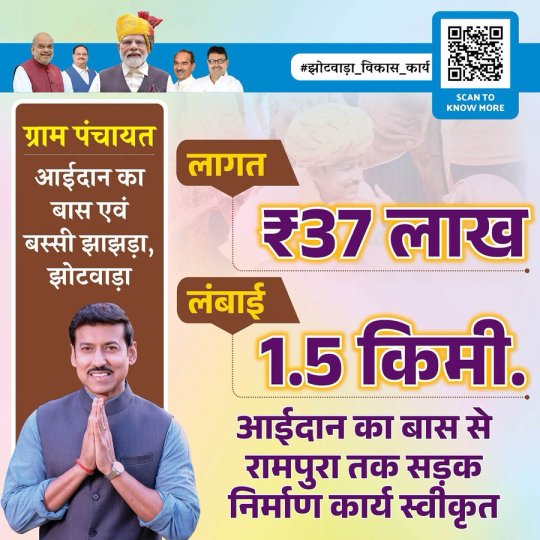
Road Construction Approved from Aaidan Ka Bas to Rampura
In another significant step towards the development of the Jhothwada region, a 1.5 km road construction project from Aaidan Ka Bas to Rampura has been approved at a cost of ₹37 lakhs, thanks to the efforts of Colonel Rajyavardhan Singh Rathore. This project will bring major relief to the areas falling under the Gram Panchayat of Aaidan Ka Bas and Bassi Jhajhada, Jhothwada.
Importance of Road Construction
This road will not only improve transportation facilities for villagers but also boost the economic growth of nearby areas. Better roads will help farmers transport their crops to markets easily, ensure safer commutes for students, and provide quicker access to emergency services.
Colonel Rajyavardhan Rathore’s Contribution
Colonel Rajyavardhan Singh Rathore has always been committed to the development of the Jhothwada region. Due to his persistent efforts, this road construction project has been greenlit. He believes that��"the development of infrastructure is the foundation of any society’s progress", and with this vision, he continues to work towards providing better facilities for every village in Jhothwada.
Conclusion
This road construction project will mark the beginning of a new era for the residents of Jhothwada. Under the leadership of Colonel Rajyavardhan Rathore, the Jhothwada family is steadily progressing on the path of development. More developmental works are expected in the future, taking this region to new heights.
0 notes
Text
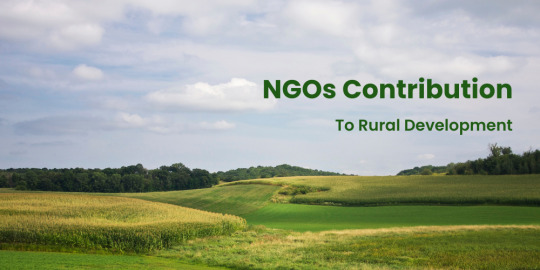
How NGOs Drive Positive Change in Rural India?
Rural communities face unique challenges, and NGOs have emerged as key changemakers in tackling them. We’ve written a blog “How NGOs Drive Positive Change in Rural India” that highlights how a dedicated rural development NGO works to improve education, health, livelihood, and more from the ground level. If you're curious about the real impact these organizations create, read the full blog!
#RuralDevelopment#NGOsInIndia#SocialImpact#RuralEmpowerment#GrassrootsChange#EducationForAll#HealthcareAccess#LivelihoodPrograms#NGOWorkIndia#RuralTransformation
1 note
·
View note
Text
National Panchayati Raj Day!
Celebrates the pivotal role of grassroots governance in India.
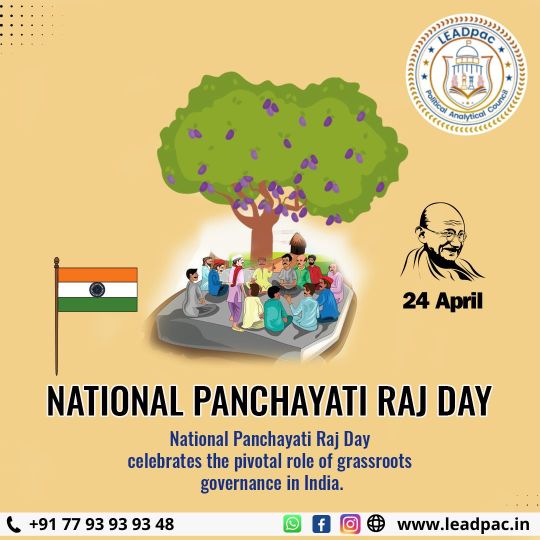
#leadpac#politicalanalysisinhyderabad#telanganapolitics#politicalanalysis#politics#telangana#PanchayatiRaj#GrassrootsGovernance#India#LocalGovernment#VillageCouncils#RuralDevelopment#CommunityLeadership#Empowerment#Decentralization#PanchayatSystem#indian politics#business
2 notes
·
View notes
Text
Agroforestry in Horticulture: Cultivating Synergy for Sustainable Landscapes 🌳🌾

The integration of trees or shrubs with agricultural crops and livestock, known as agroforestry, is emerging as a cornerstone of sustainable horticulture, particularly in regions striving for ecological resilience and diversified income streams. This time-tested practice is gaining renewed scientific interest for its multifaceted benefits that transcend traditional monoculture systems.
At its heart, agroforestry builds symbiotic relationships within the farm ecosystem. Trees provide crucial environmental services: their deep root systems improve soil structure, enhance water infiltration, and reduce erosion, especially vital on sloped terrains or in areas prone to heavy rainfall. They also contribute to increased soil organic matter through leaf litter, fostering a healthier microbial community and reducing the need for external chemical inputs. Strategically placed trees can create favorable microclimates, offering shade and windbreaks that protect sensitive horticultural crops from harsh weather, thereby extending growing seasons and enhancing overall plant vigor.
Beyond ecological advantages, agroforestry systems diversify farm income. Farmers can derive revenue from traditional crops alongside timber, fruits, nuts, medicinal plants, or even fodder from the tree components. This diversification acts as a buffer against market fluctuations or crop failures, enhancing economic stability. Examples include fruit orchards with intercropped vegetables, or timber trees bordering perennial horticultural plots. By mimicking natural forest ecosystems, agroforestry fosters biodiversity, provides wildlife habitats, and contributes significantly to carbon sequestration, embodying a holistic approach to productive and environmentally sound horticulture.
#Agroforestry#SustainableAgriculture#Horticulture#ClimateSmartFarming#SoilHealth#Biodiversity#RuralDevelopment#Agroecology#TreeFarming
0 notes
Text
youtube
The story of Afsana | Women Leadership School | Crossing Borders | S M Sehgal Foundation Once hesitant to speak up and always standing behind the line, Afsana has transformed into a vocal advocate for the intervention that changed her life. Her journey is one of courage, growth, and empowerment — and it's a story many will find relatable. Watch how she found her voice and now stands at the forefront of change.
#ruraldevelopment#sustainabledevelopment#smsfoundation#sehgalfoundation#animalnutrition#animalhealthcare#Youtube
1 note
·
View note
Text
#CRISolar#SolarEnergy#GreenAgriculture#RenewableEnergy#Sustainability#SolarPumps#CleanTech#TimesTech#EnergyTransition#RuralDevelopment#electronicsnews#technologynews
0 notes
Text
Contract Farming Business Opportunity in India and International Markets: A Comprehensive Guide
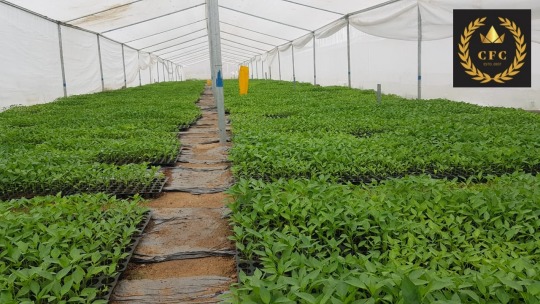
India's agricultural sector is evolving rapidly, and contract farming is emerging as a game-changer for both local and global stakeholders. If you're exploring business opportunities in contract farming or related agri-business models, this guide will help you understand the landscape, benefits, challenges, and how you can participate in this lucrative sector.
What is Contract Farming?
Contract farming is a formal agreement between farmers and buyers for the production and supply of agricultural products under predetermined conditions. These contracts specify the quality, quantity, and price of the produce, and often include support for inputs, technology, and technical guidance from the buyer to the farmer.
Why Choose Contract Farming?
Key Advantages:
Assured Market Access: Farmers get a guaranteed buyer, reducing market risk.
Quality and Productivity: Access to better seeds, technology, and farming practices improves yield and quality.
Financial Support: Buyers may provide inputs, credit, or technical support, reducing the farmer’s financial burden.
Income Stability: Predetermined pricing helps protect farmers from market fluctuations.
Rural Development: Generates employment, reduces migration, and promotes rural self-reliance.
For International Investors:
India’s contract farming sector is open to global partnerships, offering scalable business models and access to a vast agricultural base.
Challenges in Contract Farming
Power Imbalance: Large firms may have more bargaining power than small farmers.
Contract Enforcement: Legal enforceability can be weak, especially in rural India.
Delayed Payments: Sometimes buyers delay payments, impacting farmer cash flow.
Quality Disputes: Disagreements over produce quality can arise.
Limited Access for Women: Women often have less access to contract farming opportunities.
How to Get Started with Contract Farming
Research Your Market: Understand the crops in demand locally and internationally.
Choose the Right Model: Select a contract farming model that fits your scale and goals.
Build Partnerships: Connect with reliable buyers, processors, or exporters.
Leverage Technology: Use agri-tech solutions for better farm management and traceability.
Stay Compliant: Ensure all contracts are legally sound and transparent.
Frequently Asked Questions (FAQ) on Contract Farming
Q1: What is contract farming and how does it work? Contract farming is an agreement between a farmer and a buyer where the farmer agrees to produce a certain quantity and quality of crops, and the buyer agrees to purchase them at a predetermined price. The buyer may also provide inputs, technical support, and sometimes credit.
Q2: Who can participate in contract farming? Both individual farmers and agribusinesses can participate. Medium and large farmers are often targeted, but models exist for smallholders as well.
Q3: What crops are suitable for contract farming? Common crops include vegetables, fruits, grains, oilseeds, and plantation crops. The choice depends on market demand and buyer requirements.
Q4: What are the main benefits for farmers? Farmers benefit from assured markets, technical support, better prices, and reduced risk.
Q5: Are there risks involved in contract farming? Yes, risks include contract disputes, delayed payments, quality disagreements, and market fluctuations. Choosing reputable partners and clear contracts can mitigate these risks.
Q6: How can international investors get involved? International investors can partner with Indian agri-businesses, invest in processing units, or set up joint ventures for export-oriented contract farming.
Q7: Is contract farming legal in India? Yes, contract farming is legal and supported by various state and central government policies. However, contract enforcement varies by region.
Q8: What support do farmers receive from buyers? Support may include seeds, fertilizers, technical advice, training, and sometimes financial credit.
Q9: Can contract farming be profitable? Yes, with the right model and management, contract farming can be profitable for both farmers and buyers.
Q10: How do I find contract farming opportunities? Platforms like WhatsYourNeed.in connect farmers, investors, and buyers, offering multiple business options in the agri-sector.
Conclusion
Contract farming presents a win-win opportunity for farmers, investors, and agri-businesses in India and abroad. By leveraging modern business models, technology, and transparent contracts, you can tap into one of the world’s largest and most dynamic agricultural markets.
If you’re ready to explore contract farming or other agri-business opportunities, WhatsYourNeed.in offers a range of solutions tailored for both Indian and international audiences. Reach out today to start your journey in sustainable and profitable agri-business!
#ContractFarming#AgriBusiness#AgriInvestments#FarmingOpportunities#SustainableAgriculture#IndiaAgriculture#AgriTech#RuralDevelopment#FarmToMarket#SmartFarming#AgriStartups#ExportFarming#WhatsYourNeed#AgribusinessIndia#FarmersFirst#InvestInAgriculture#AgroBusiness#GlobalAgriculture#FoodSecurity#IndianFarmers
1 note
·
View note